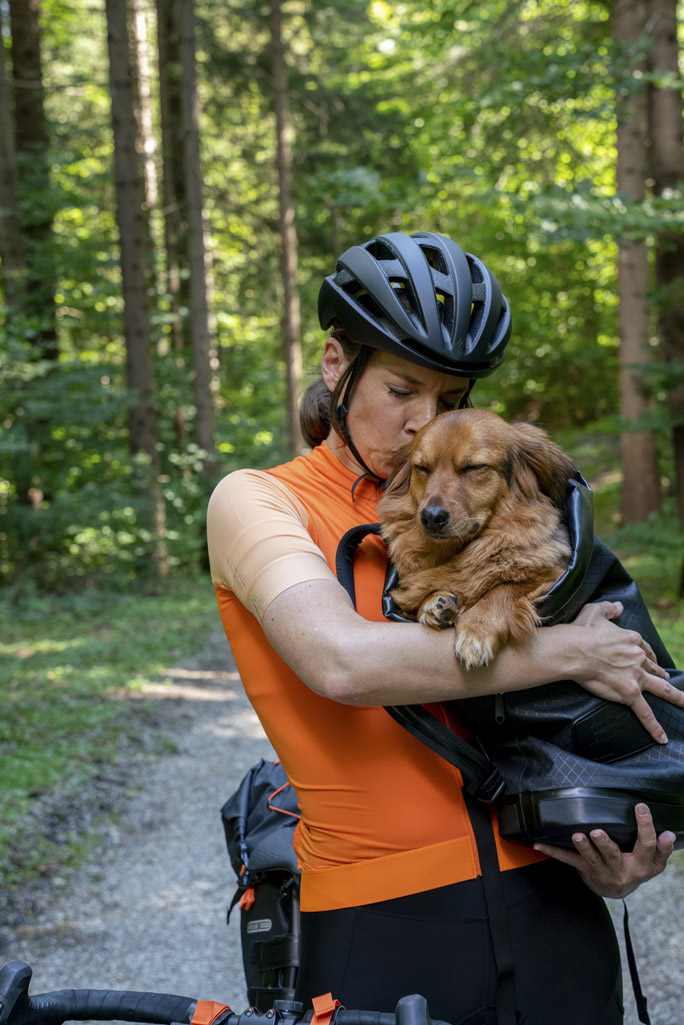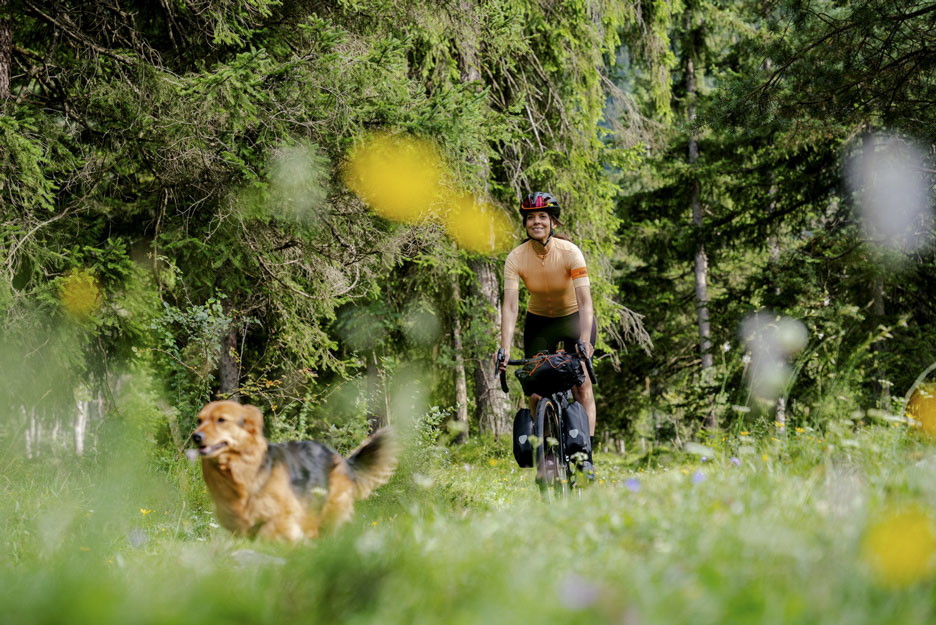To cycle with your partner or not to cycle? That is the question. Is it better to ride and risk an argument over dishwashing duties while combating double gradients or to enjoy a healthy solo activity once in a while? Here’s Anke is Awesome’s take on #couplegoals and how to balance endorphins and emotions while having some fun in the saddle.

In another life, I rode a mountain bike and spent most of the time watching my then-boyfriend disappear into the distance. I don’t know what stood out the most: my fury when he’d eventually circle back to ask if I was okay – a futile question, given the eye-watering gradients that had become a fixture in every route he planned – before immediately riding out of sight again. Or that I’d become a worn-out example of someone who a partner had persuaded to take up a hobby that just wasn’t clicking.
But I should really mention that he was a good guy! The relationship itself was great… right up until bikes entered the scene. Because cycling doesn’t just mercilessly reveal all about each other’s fitness, it also strips bare the depths of your soul.


The fault of the fittest
As the perpetually weaker one of the pair, it’s almost impossible for the stronger one to get it right. It’s like the power of their calves is automatically connected to being wrong. That even goes for a friend of mine, a former pro rider, who is always beyond careful to ensure his back wheel doesn’t escape a millimeter too far from his loved one and often gently puts his hand on her sweaty back to give her a turbo-mode push up the hill without being asked. But sooner or later, they’ll be negotiating over the length of the ride (too far), the wheel gaps (too big), and the average speed (too high).
Exceptions prove the rule
No surprise: it’s mostly men who get blamed in the saddle. So, I’m happy to be able to cite a few examples of women who have to live with the burden of being faster than their mates. Like a male colleague of mine summed it up: “Sure, it’s somewhat positive when the point of contention isn’t if you get to go for a ride, but whether she wants to do ‘only’ four hours instead of seven.”
In another case, a friend had to explain to his partner on their way home from a holiday why his broken shoulder and the threat of losing his driver’s license meant he couldn’t collect her from the top of Großglockner so, no, her hunt for altitude meters would have to wait another day.
It appears that both genders can be guilty of putting their endorphins over the emotions of their loved ones.
Don’t get me wrong, I wholly recommend going on bike dates. I remember one morning in December – a balmy 6 degrees Celcius – when we started the first climb of the date. As he tried to prove to himself (or to me?) that he could drop me, I proved to him just how slowly I could go, knowing that both he and his ego were waiting at the top, underdressed and shivering. In a moment like this, bikes save you from wasting valuable time on a second or third date.

The pragmatic ones
A completely different approach. These ones have understood that you don’t have to share every single thing you do. Like snorers have separate bedrooms, this faction simply spends their free time separated. But it’s not all plain sailing: like any bike ride, expect ups and downs. The non-cyclist will know, in theory, they’re not playing second fiddle to the bike, but it can settle into a weighty jealousy towards said bike as well as groans of a different kind in the bedroom when the sex appeal of a pair of bibs shorts once again fails to hit the mark.
The unicorns
However, let’s take hope from the fact that there are couples in existence who can go on happy coffee rides together. And even complete ultra-distance races without suffocating their partner with their bivvy bag.
After a friend did her first ultra with her boyfriend, she told me the following: “If you’re going to ride 2,700 km with 50,000 meters of climbing together, it definitely helps to be able to read each other’s moods.” You can imagine what their honeymoon will look like.
The editor of a German cycling magazine has also found a way for him and his wife to ride together – they now have an impeccably specced high-end road bike tandem that finally allows them to ride at the same speed.


The ground rules
Whether you’re going at a leisurely pace or chasing records, the foundations for pair cycling remain the same:
- The faster one can slow down, but the slower one can’t speed up.
- An argument about a ride’s distance or speed is, in most cases, not about the ride. Nor is it about cycling.
- Having different hobbies doesn’t mean your relationship will fail.
- Having joint hobbies doesn’t mean your relationship is any stronger.
- Choosing to ride is not the same as not choosing to spend time with your partner.
- Riding friends are not automatically relationship-material.
- Non-riding friends are not automatically non-relationship material.

Happy Endings
There’s a widely shared internet meme with two pairs of tightly entwined legs sticking out under a duvet with visible cycling tans. Most bike lovers would probably caption it with #couplegoals. But what is actually missing from the image is how those pesky spokes affect the dynamic.
A layer of potential friction that only a specific amount of emotional chamois crème can soften. But regardless of whether you ride faster alone or slower together or whether your favorite riding companion has two legs or four, a bike represents a plus-one in your relationship. It is up to you if the love triangle works.





